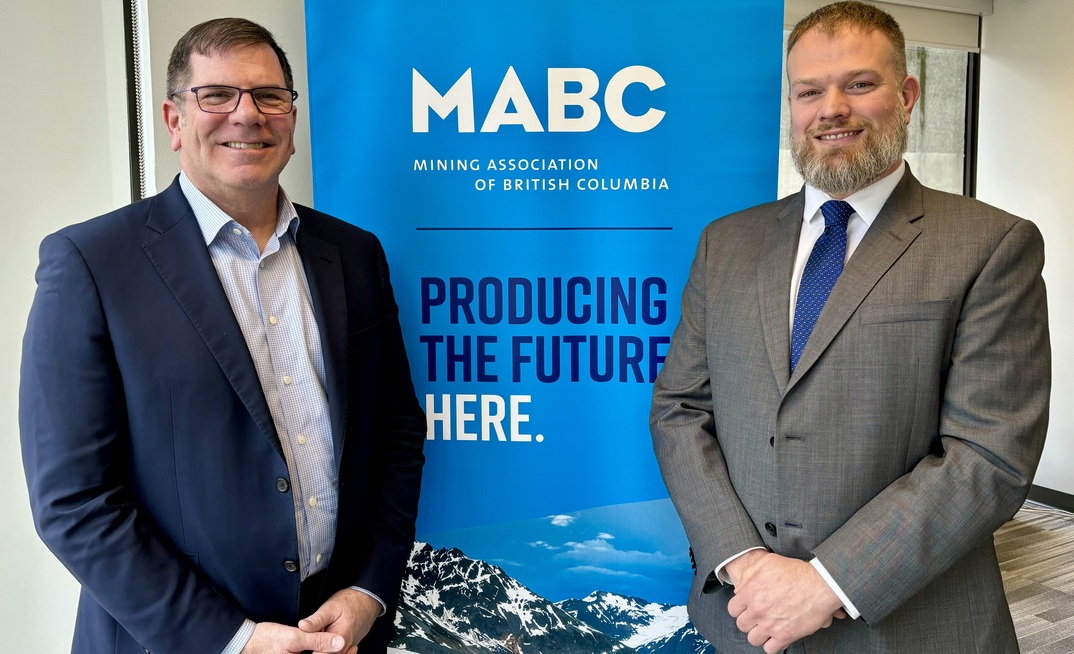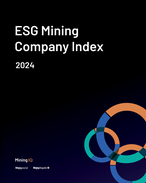The initial phase of the newly developed provincial strategy introduces pivotal steps to foster a sustainable economy through the growth of the critical minerals industry.
Outlined in the release were 11 points that the BC government plans to implement to facilitate the growth of the domestic critical metals sector and supply chain.
The points can be summed up into five themes, including establishing a Critical Minerals Project Advancement Office to expedite projects and optimise federal funding opportunities. Additionally, the government plans to create a critical minerals atlas to offer up-to-date geoscience data and facilitate exploration and land-use planning within the province.
Collaboration with First Nations and industry was also underscored to identify and develop critical mineral infrastructure projects, such as the North Coast Transmission Line, supported by a C$36-billion (US$26.6B) BC Hydro capital plan.
YOU MIGHT ALSO LIKE
Lastly, the government plans to Implement measures to ensure the "highest" ESG standards, including the Energy and Mines Digital Trust project, which enhances transparency in mining operations.
While the Critical Minerals Strategy may be new, many of its key points have been championed by the Mining Association of British Columbia (MABC) and the complimentary suppliers association MSABC (Mining Suppliers Association of BC) for the last decade.
Both organisations have been busy in 2024, highlighting the immense value of the province's critical minerals reserves and the economic contribution of BC's vast mining sector.
Mining Magazine spoke with Michael Goehring, president and chief executive of MABC, and Alec Morrison, president and chief executive of MSABC, about two recent reports, the province's critical minerals ambitions and what supports each organisation would like to see from different levels of government.
Untapped potential
In early January, the MABC released the results of a critical mineral economic impact assessment study, which pegged the long-term value of 16 critical minerals projects -14 new mines and two expansions- to be close to C$800B.
"BC is known as a tier one mining jurisdiction globally," said Goehring, who noted the province is Canada's largest producer of copper and steelmaking coal, the second largest producer of silver, and only producer of molybdenum.
"We have significant critical minerals opportunities in British Columbia," he added. "We have or produce 16 of the 31 critical minerals on Canada's list. Critical minerals offer British Columbians a generational opportunity."
In addition to economic potential, the mining industry is a significant contributor to the provincial economy. As the MABC chief executive explained, the value added by the industry extends beyond mineral extraction to milling, processing and transportation.
Critical minerals offer British Columbians a generational opportunity
"In 2022, the economic impact of our sector was $18.2 billion," said Goehring. "We directly and indirectly employ 35,000 British Columbians. Our contribution to British Columbia's GDP was around $7 billion in 2022. And we make up some 28% of the province's goods exports."
Community investment was also highlighted by MSABC CEO Alec Morrison, who pointed to the Mining for Miracles program that was established in 1988 and has raised $37 million for the BC Children's Hospital.
"[Mining for Miracles] was formed by members of our mining community and our mining supply chain community to target funds to a cause that would benefit all communities in British Columbia," said Morrison. He continued: "One of the most recent campaigns was on rare diseases that the general health system didn't have the extra capacity to put funding into."
The organisations also invest in education programs that provide supplies to teachers and facilitate geological studies.
"It's a way to get back to make sure our teachers have the proper tools to educate the next generation of British Columbians on earth sciences," said Morrison.
Indigenous partnership
Beyond those community investments, both organisations have also worked to establish strong working and economic collaborations with the province's many First Nations.
"It's quite common to read a lot about how mining companies are working hard to ensure communities around their operations realise some of the economic benefits to come from those operations, which wasn't necessarily always the practice in the past," said Morrison. "The supply chain is stepping forward as well to make sure they're doing their part."
Morrison then referenced the recent partnership between Tahltan Nation Development Corporation (TNDC) and Finning Canada to launch the TNDC Mobile Training Centre as evidence of the initiatives that can be born out of cooperation.
In the announcement, The TNDC Mobile Training Centre is described as a 44-foot trailer equipped with four simulators catering to various operator training programs, such as articulated trucks, dozers and loaders, and excavators, with additional programs under development.
The simulators provide a secure virtual environment to enhance proficiency and skill in operating Cat equipment. Located at Newcrest's Red Chris mine within the Tahltan Nation's traditional territory, the centre can be relocated to alternate sites as necessary.
"Another recent example, also involving containers, is a company called McCue Engineering, out of Delta, British Columbia. They have a new certification program where they help train local Indigenous communities and others how to do maintenance for their modular water treatment plants that they're sending to [mining] projects to ensure that the water that's used is returned to the environment in a clean state," said Morrison.
The training programs will be vital in the coming years as both Morrison and Goehring expressed concern over the growing skilled labour shortage facing the North American mining industry.
"That is a significant issue. And one, which our sector is very focused on," said Goehring, noting that the MABC is working with MIHR and other stakeholders to address the problem.
"We have made some recommendations to government for them to carry out a few programs and provide funding for skills training in British Columbia. And it happens to be one of the action items in the government's critical mineral strategy," he added.
Government support
While both Goehring and Morrision are quick to point to why BC is an excellent mining jurisdiction, the organisation heads believe the province could better position itself with more robust fiscal policy and a more streamlined permitting process.
"We have noted to the government of BC that we need to have a good fiscal policy; that is the foundation of a strong critical mineral strategy for our province going forward," said Goehring. "We are a high-cost jurisdiction primarily because of our geography, but also [because of] our geology. While we're Canada's largest producer of copper, we have to move a lot more dirt to get at that copper." Although Goehring supports the national Carbon Tax, he would like it to be more accurately weighted.
"Our sector currently pays the highest carbon tax in Canada, in the world; we also have the lowest emissions globally, largely because all of our mines are hooked into a clean electricity grid," he said. "It's imperative that our critical mineral mines in BC pay a carbon tax that's competitive with other Canadian jurisdictions, specifically Ontario and Quebec while maintaining BC's position as a climate leader."
Referring to the first phase of the provincial Critical Minerals Strategy, Goehring commended the government on a "number of good action items," adding that the plan will advance the mining sector.
The BC mining supply chain supports nearly 4000, small, medium and indigenous-affiliated businesses
He was also critical of the lack of action steps targeting permitting streamlining.
"It takes too long to develop a mine in British Columbia. And in fact, this is a common refrain across Canada. So, you know, those lengthy timelines for permits and authorisations slow project development and are a barrier to investment. So we need to expedite permitting timelines without compromising environmental protection," he said.
As Goehring noted, dismay with the timeframe for permitting mining projects in the country has been a recurring refrain from BC to New Brunswick.
The issue was addressed by Canada's Energy Minister, Jonathan Wilkinson, at the 2024 IEA Ministerial Meeting held in Paris, February 13-14 While there, the minister told Reuters that his government was looking at trimming a decade off the process to ensure the country remained competitive and could combat China's dominance in the mineral production space.
"(We're) looking at how do we optimise the regulatory and permanent processes so you can take what is a 12 to 15-year process and bring it down to maybe five," he said.
The need for project fast-tracking was also highlighted in a statement from Canada's Ministerial Working Group on Regulatory Efficiency for Clean Growth Projects issued in early February.
The "clean growth" of the US, Australia and Japan was also referenced in the announcement.
"An efficient and effective review process for clean energy, critical minerals, transportation and other major projects is essential. It keeps our economy competitive and creates good, well-paying jobs," wrote Seamus O'Regan Jr., Minister of Labour and Seniors and working group chair. "Project proponents and investors have told us that more clarity and certainty in terms of expectations, timelines and decision-making processes will provide them with added confidence to invest in Canada and get major projects built faster."

























